(this page is currently being updated)
For many years members of the 69th New York re-enactment group have participated in medical displays and talks.
Currently Surgeon Stewart Hayllar, and Assistant Surgeon Ian Morris are ably assisted by Helen and Georgina Robinson. Impromptu talks happen at every ree-nactment event we attend, and more formal displays of surgery are in the planning for next season.
Below are images from our displays at re-enactments, along with relevant medical information from the 1860s.
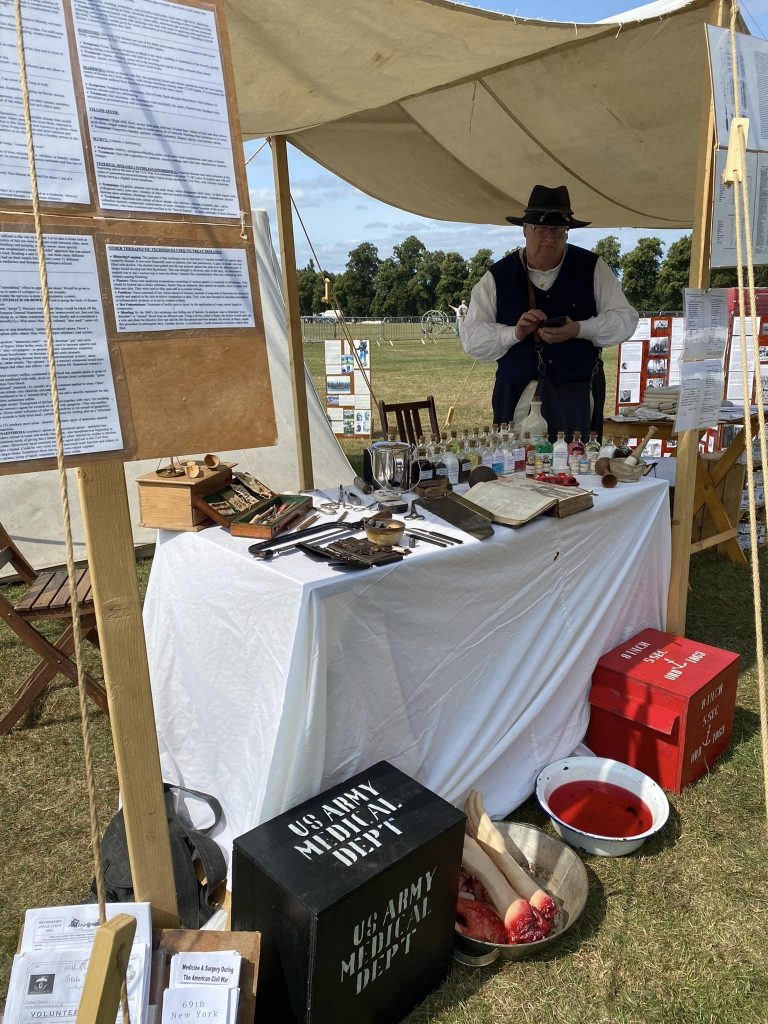
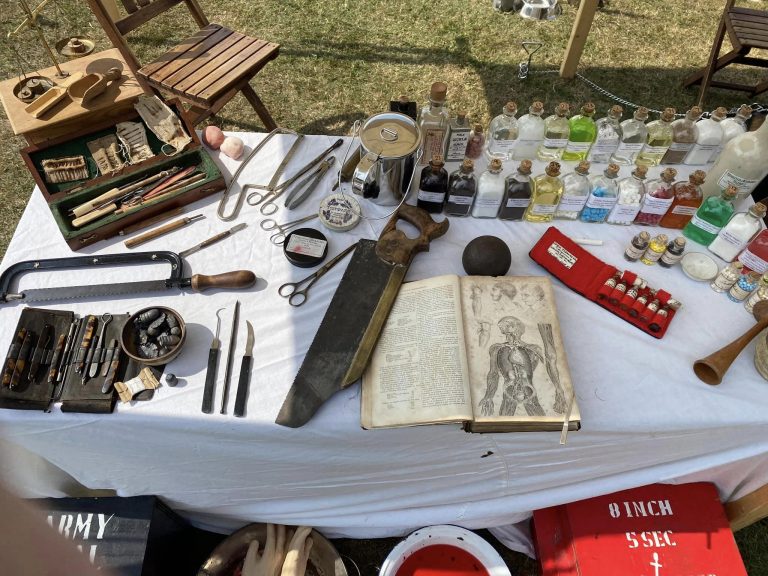
Images from our event at Northampton Balloon Festival 2024
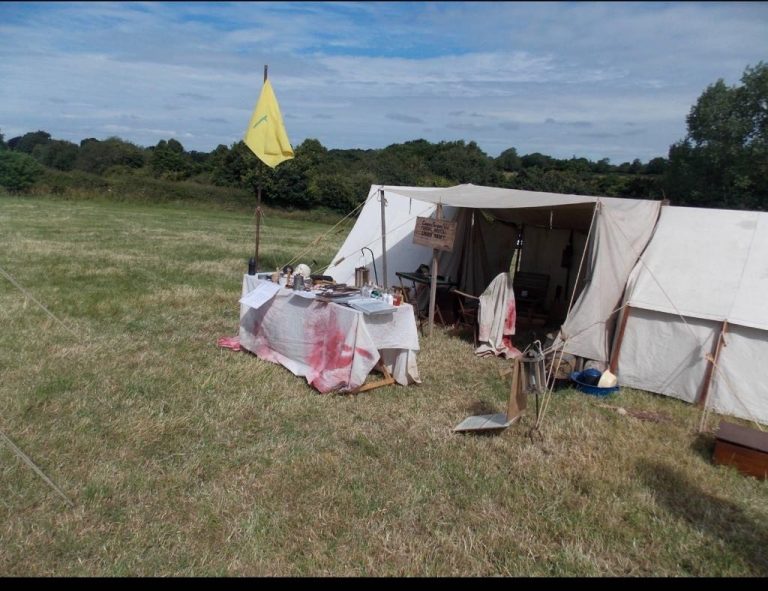
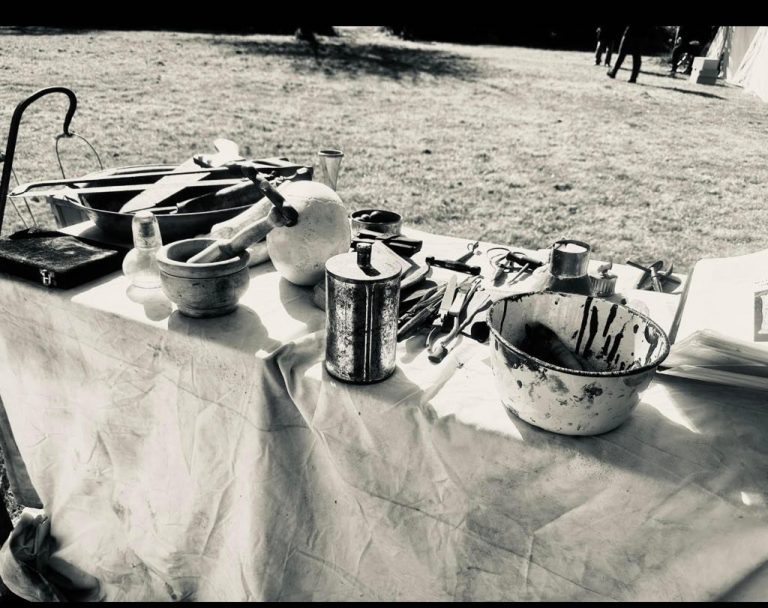
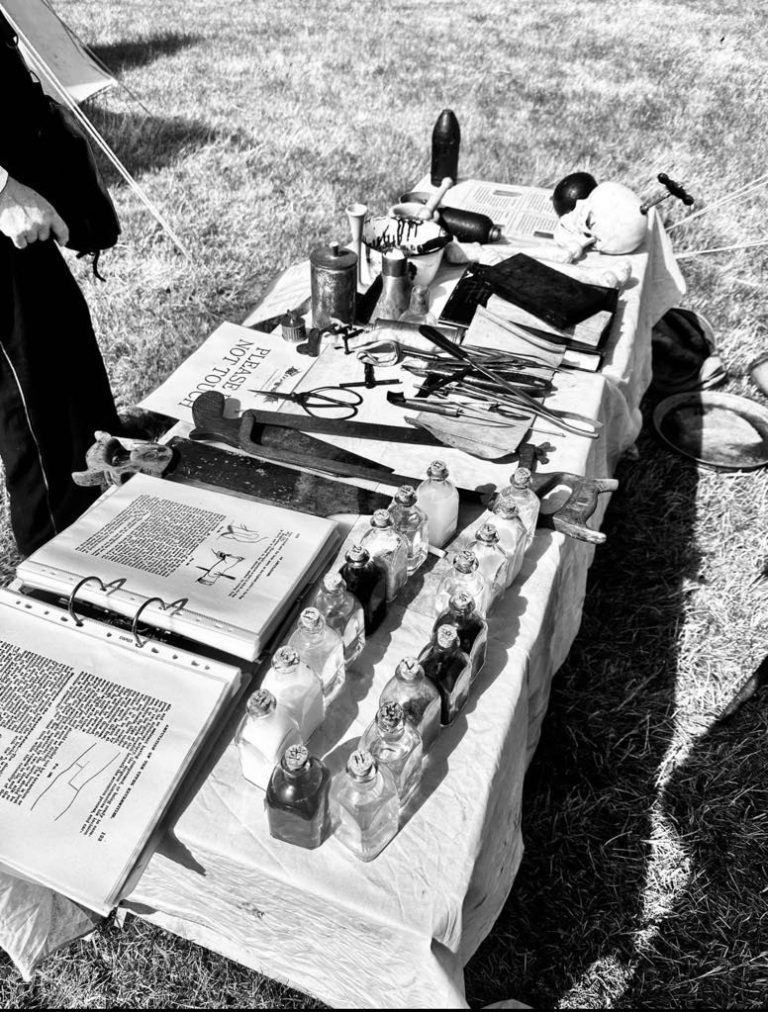
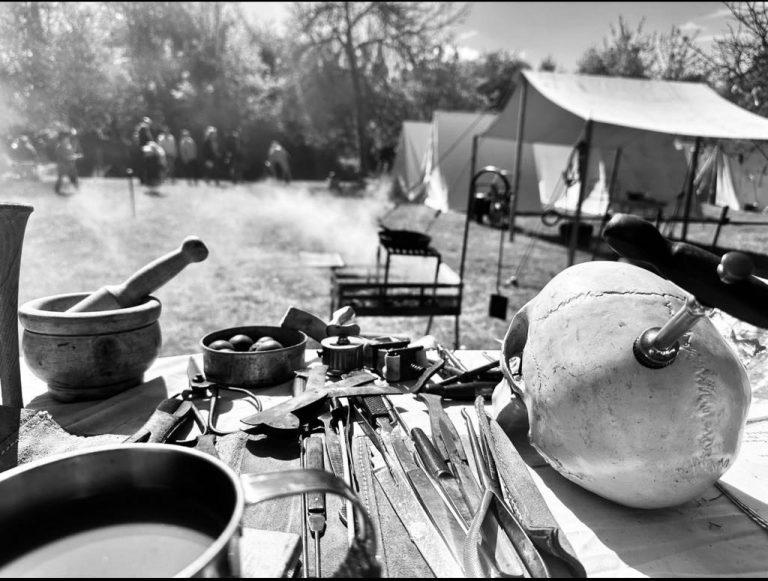
Images from our event at Upton-On-Severn 2024
Medicine & surgery during the American Civil War
Between 1861 and 1865 the American Civil War produced some gruesome statistics. Almost 3,000,000 men took part in the conflict, of whom approximately 618,000 would die, one third of these would die in battle or as a result of wounds received in the fighting the rest died from disease. From the 618,000 casualties the Union lost 359,528; the Confederates about 258,000. (There is some debate about the accuracy of Confederate numbers as a lot of Confederate records where lost during the conflict). This loss to the Confederacy represented 1 in 4 men of military age.
Not reflected in these figures is the suffering of the men injured or struck down by illness. In the Federal Army there are documented cases of approximately 500,000 injuries and 6,000,000 cases of disease and illness. Approximately 50,000 amputations were carried out during the war and half million men survived the war permanently disabled. Many more suffered pain and hardship long after the war had finished.
The Civil War occurred during the early stages in the development of modern medicine. Most academic medicine was studied in Europe, with very little medical research being conducted in the United States. Any developments discovered in Europe would take time to reach doctors in America. The concepts of cleanliness and cross infection was in its infancy and new ideas were often scorned and ridiculed by influential traditional doctors.
On the military side the commanders fought the battles with Napoleonic tactics using rifled weapons which had an effective range of 500 yards, rather than the smoothbore weapons which were accurate to 50 yards. The bullets fired by these rifled muskets was a conical shaped ‘minie ball’ developed by French Captain Claude Minie. This soft lead bullet, that weighs one ounce flattened and deformed on impact causing horrendous damage to tissue and bone. If the soldier was struck in the arm or leg the bullet could shatter up to 10 inches of bone, that would usually result in amputation of the limb. The bullet would have an entrance hole the size of a thumb and an exit hole the size of a fist.

If you were struck in the abdomen or chest the wound would usually be fatal.
New recruits were supposed to be given a through examination on enlistment: Part of the US Army Regulations stated “In passing a recruit the medical officer is to examine him stripped, to see he has free use of all his limbs; that his chest is ample; that his vision, hearing and speech are perfect; that he has no tumours or ulcerated or cicatrized legs; no rupture or chronic condition.” But some physicians just march the men past in rows and provided they could walk they were allowed in the army. Examinations like this is the main reason that over 800 women enrolled as soldiers.
Another problem amongst recruits, especially those from farming or village backgrounds, was that they had never contracted the normal childhood illnesses like measles, chicken pox etc. When they came into contact with thousands of other men at the training camps, these diseases would often become epidemics and entire regiments could be out of action for weeks. The early camp that were set up suffered a lot from malaria, camp fever and dysentery due to the men drinking contaminated water, usually cased by digging the latrines to close to a water supply or to close to the sleeping area. Food not cooked properly, a bad diet and a lack of basic hygiene also contributed to soldiers sickness.
Of all the medicines prescribed during the Civil War only 6 had any therapeutic value these were:
Narcotics, Opium and Morphine, which were powerful analgesics and without doubt relieved the suffering of countless soldiers. (The most effective way of administering this would have been by injection, but unfortunately the hypodermic syringe was in short supply, there being only 11 in the US at the start of the conflict. The usual method was to sprinkle the drug directly onto the wound or orally. During the war the Union Army went through 2.8 million ounces of tincture of Opium or Opium powder and almost half a million Opium pills).
Next was the Anaesthetics, ether and chloroform these where administered using a cone of cloth were the liquid was soaked onto the cloth. The cloth was then placed over the mouth and nose of the patient until he fell asleep when it was removed and the patient allowed to breath air, if he began to wake the mask was replaced. (These general anaesthetics was used by both sides during the war. The Union records document the use of anaesthesia in over 80,000 cases 76% of these chloroform either 14% and the rest a mixture of both).
Bromine was used as a treatment of hospital gangrene, more so in the latter stages of the war. It was initially sprayed into the air to combat ‘effluvia’ bad air but was later used as a topical antiseptic.
Quinine had been used for the treatment of Malaria for hundreds of years before the Civil War its was continually used during the war as a cure for all types of fever (Over 2 million ounces of Quinine products were produced by the North during the war.)
Of the other medicines used during the war most did nothing but many caused irreversible harm or even death. After the war there was several cases of Senile Dementia caused by the heavy metals used in the medicines. There were also many cases of morphine and opium addiction.
After the initial treatment in a field hospital a soldier would be transported to the rear to a general hospital usually in the larger cities, they were transported in hospital ships, often converted river boats, or by train with carriages fitted with bunk beds. Here they would receive better nursing care and better rations. A hospital of 1,000 beds would have a staff of approximately 150 to look after the men, some of the staff would be recruited from patients at the later stages of convalescents, these were often untrained and rapidly changed.
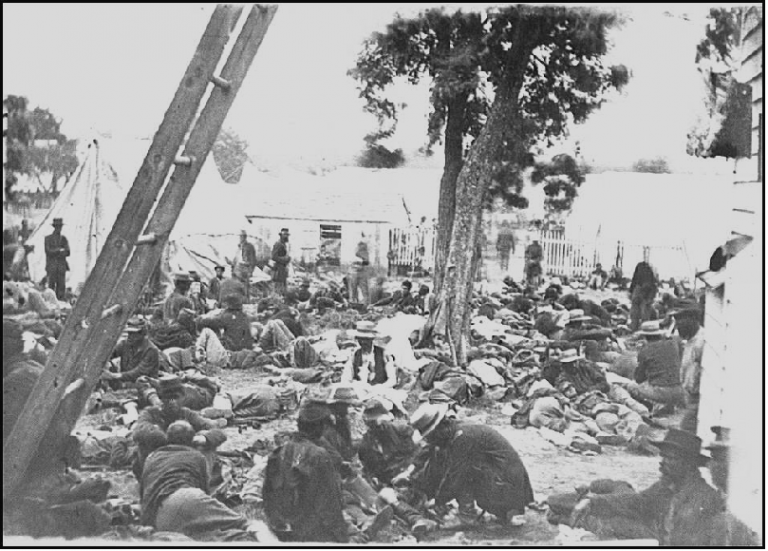
A civil war field hospital
Female nurses were recruited to help in the hospitals, but due to Victorian propriety the successful applicants had to be over 30, healthy and ‘devoid of personal attractions’. They had to be able to cook the special dietary needs of the soldiers and renounce ‘coloured dresses, hoops, curls, jewellery and flowers in their bonnets’ according to Dorothy Dix who was placed in charge of recruiting the nurses. Amongst their duties was to keep the wards and soldiers in their care looking neat, reading and writing for the men but not from any book or newspaper. For this they were paid 40 cents a day and one ration of food.
Bibliography:
Doctors in Blue by G. W. Adams 1952
Civil War Medicine –An Illustrated History– by M. J. Schaadt MD
Civil War Medicine 1861-1865 by C. K. Wilbur MD